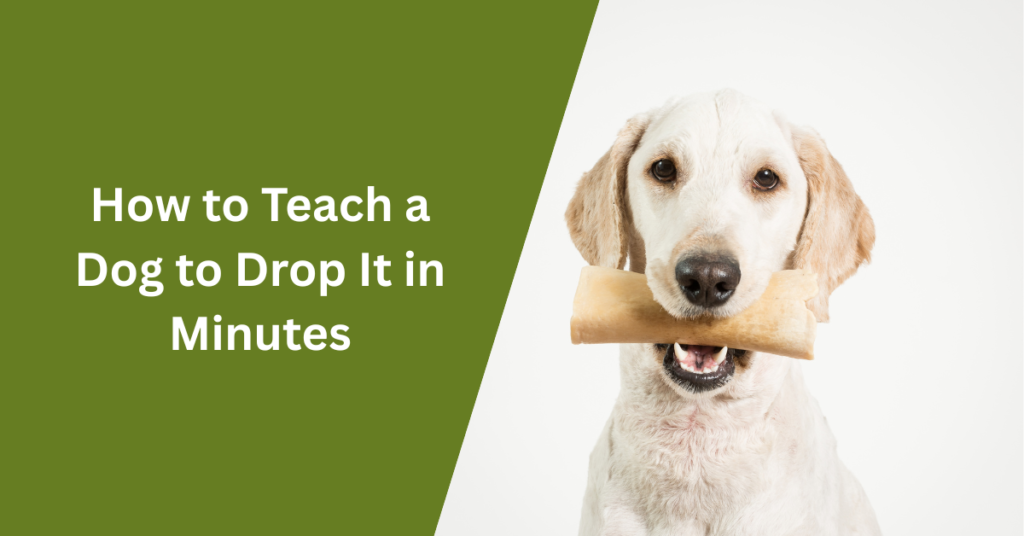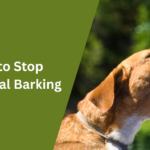Teach a dog to drop it in minutes by using high-value treats, calm commands, and quick swaps. Hold a treat near your dog’s nose and say “drop it” as they release the object. Reward instantly to reinforce the behavior. Practice with toys or safe objects, keeping sessions short and consistent for faster learning.
Getting Ready for Drop It Training
Success in teaching your dog the “drop it” command starts with proper preparation. Before diving into training, gathering the right supplies and creating an ideal environment sets the foundation for effective learning.
Choosing the right training treats
Selecting appropriate treats plays a vital role in successful training. The ideal training treats should meet three essential criteria: soft texture for quick consumption, small size for multiple rewards, and strong aroma to maintain interest.
For “drop it” training, maintaining a variety of treats with different value levels proves most effective:
- Low-value treats: Regular kibble or dry biscuits work well for initial practice sessions
- Medium-value treats: Soft, chicken-flavored treats or small pieces of deli meat
- High-value treats: Premium options like shredded cheese, roasted chicken, dried sardines, or sliced turkey hot dogs
Combining these treats creates what trainers call a “trail mix” approach, allowing you to adjust rewards based on your dog’s performance and motivation levels. Furthermore, rotating between different treats prevents boredom and maintains enthusiasm throughout training sessions.
Setting up a safe practice area
Creating an appropriate training environment ensures both safety and optimal learning conditions. The practice area should be:
- Easily accessible from main living areas
- Free from dangerous items or hazards
- Equipped with proper boundaries or gates
- Away from distracting stimuli
Setting up a designated training space helps your dog focus and builds positive associations with the learning process. Additionally, this controlled environment allows you to gradually introduce more challenging scenarios as your dog progresses.
Gathering training toys
Selecting the right training toys proves crucial for successful “drop it” training. Start with:
- Low-value toys: Items your dog enjoys nonetheless finds easy to release
- Interactive toys: Objects suitable for games like tug-of-war
- Practice items: Various toys of different textures and sizes
Begin training with less exciting toys, gradually working up to your dog’s favorites. This progression helps build confidence and reliability in the “drop it” command. For dogs particularly attached to specific items, consider using identical toys for trading exercises.
The Basic Drop It Training Method
Teaching your dog to drop items begins with a simple trading game that builds trust and cooperation. This foundational training method creates positive associations with releasing objects, making it easier for your dog to respond reliably in real-world situations.
Starting with low-value toys
First, encourage your dog to grab the toy and play for a brief period. Once they’re engaged, hold the toy still to signal a pause in play. This subtle change in interaction helps your dog understand that something new is about to happen.
For optimal results, follow these steps:
- Let your dog play with the toy for several seconds
- Hold the toy completely still
- Present a high-value treat near their nose
- Wait for them to release the toy
- Immediately mark the behavior with praise or a clicker
Adding the verbal command
Introducing the verbal cue requires precise timing and consistency. After your dog reliably trades toys for treats, incorporate your chosen command – “drop it,” “out,” or “trade”. The key lies in proper sequence:
- Say your chosen command once
- Pause for one second
- Present the treat
- Mark and reward when they release
Avoid repeating commands multiple times, as this can teach your dog to ignore the first cue. Subsequently, your dog learns that the word predicts an opportunity for a reward, creating anticipation that encourages quick responses.
When to reward
Timing rewards correctly reinforces the desired behavior and builds reliability. Immediately after your dog releases the item, mark the moment with praise or a clicker, followed by the treat. This precise timing helps your dog connect the action of dropping with receiving rewards.
As training progresses, introduce variable rewards:
- Sometimes offer treats
- Other times provide praise
- Occasionally resume play immediately
Once your dog consistently drops items upon command, gradually increase the time between the cue and reward presentation. This teaches patience and builds a more reliable response, even when rewards aren’t immediately visible.
Moving to Advanced Drop It Practice
Once your dog masters the basics of “drop it,” advancing to more challenging scenarios strengthens their reliability in real-world situations. This progression requires patience and consistent practice with increasingly valuable items and diverse environments.
Using higher value items
After establishing solid fundamentals, introduce items your dog finds more enticing. The key lies in offering trades that outweigh the value of what your dog currently holds. For instance, if your dog has a regular toy, offering premium treats creates an irresistible exchange opportunity.
Consider these strategies for successful trades:
- Present treats significantly more appealing than the held item
- Use multiple treats for particularly valuable objects
- Incorporate favorite toys as alternative rewards
- Demonstrate enthusiasm about the trade item
For dogs primarily motivated by toys rather than food, trading one toy for another proves highly effective. Playing with the new toy enthusiastically often prompts your dog to willingly release their current item. This approach reinforces that dropping items leads to equally enjoyable alternatives.
Training in new locations
Follow this location progression:
- Different rooms in your house
- Your backyard or patio
- Quiet outdoor areas
- Busier environments with distractions
Solving Common Drop It Challenges
Even well-trained dogs sometimes face challenges with the “drop it” command. Understanding these common obstacles helps address them effectively, ensuring your training efforts yield lasting results.
When your dog runs away
Dogs often dash away with items because they’ve learned that approaching means losing their prize. This behavior typically stems from previous experiences where items were forcefully taken away.
To address this challenge:
- Remain calm and avoid chasing
- Offer high-value treats as trades
- Practice the “drop it” command regularly with positive reinforcement
- Never forcefully grab items from your dog’s mouth
Remember that running after your dog transforms the situation into an exciting game, making them less likely to surrender items. Instead, focus on building trust through consistent trading exercises.
Dealing with resource guarding
Resource guarding, sometimes called possessive aggression, manifests when dogs perceive threats to their valuable possessions. Signs of resource guarding include:
- Freezing or stiffening
- Head turning
- Showing teeth
- Growling or lunging
- Snapping or biting
First, understand that resource guarding stems from instinct rather than defiance. Punishing these behaviors often intensifies the problem, leading to more severe reactions. Therefore, focus on changing your dog’s emotional response to approaches.
Breaking the chase game habit
Many dogs transform “drop it” into an exciting game of chase, primarily because they’ve learned it leads to attention and play. This behavior often escalates when owners announce their intentions or display frustration.
Effective strategies include:
- Using a leash for better control during training
- Staying calm and avoiding dramatic reactions
- Teaching reliable drop cues with low-value items first
- Consistently rewarding successful drops
Making Drop It Reliable in Real Life
Mastering the “drop it” command in controlled environments marks only the beginning. The real challenge lies in preparing your dog for unexpected situations where quick responses could prevent emergencies.
Emergency response training
Building a reliable emergency response requires systematic practice under varying conditions. First, establish a calm yet authoritative tone for urgent situations. Your dog needs to recognize the difference between casual commands and emergency cues.
Consider these essential elements for emergency response:
- Practice with different voice tones – from casual to urgent
- Maintain composure despite stressful scenarios
- Reward generously for immediate responses
- Create positive associations with emergency commands
Practice with found items
Moving beyond controlled exercises, incorporate “found items” into your training routine. Set up practice scenarios both indoors and outdoors, placing various objects strategically for your dog to discover.
Effective found-item training involves:
- Pre-setting safe practice items in different locations
- Allowing natural discovery during walks or play
- Maintaining casual observation of your dog’s behavior
- Using appropriate rewards based on item value
Conclusion
Teaching your dog a reliable “drop it” command stands as one of the most valuable investments you can make in their safety and well-being. Through consistent practice and positive reinforcement, this essential command becomes second nature for your furry friend.
Success comes from starting with basic trades, gradually advancing to challenging items, and practicing across different environments. Remember that patience and positive associations build the foundation for reliable responses during emergencies.
Most importantly, keep training sessions enjoyable and reward-based. Your dog will learn that surrendering items leads to positive outcomes, creating trust and strengthening your bond. Regular practice ensures your dog responds confidently when faced with potentially dangerous situations, giving you peace of mind during daily adventures together.
I’ve loved dogs all my life and have cared for many different breeds over the years. Here, I share simple tips, stories, and helpful advice for all dog lovers. Whether you’re a new pet parent or a lifelong dog fan, you’ll find something useful and fun on my site.


